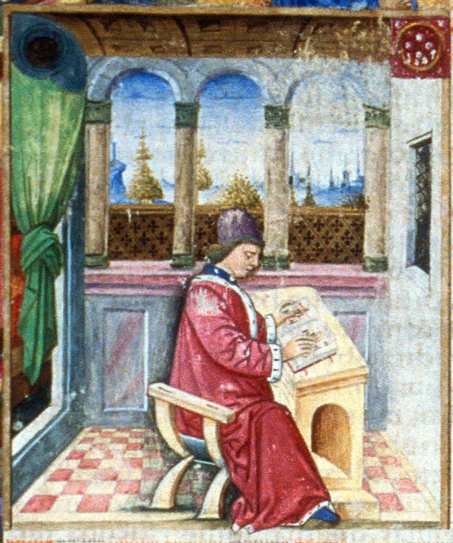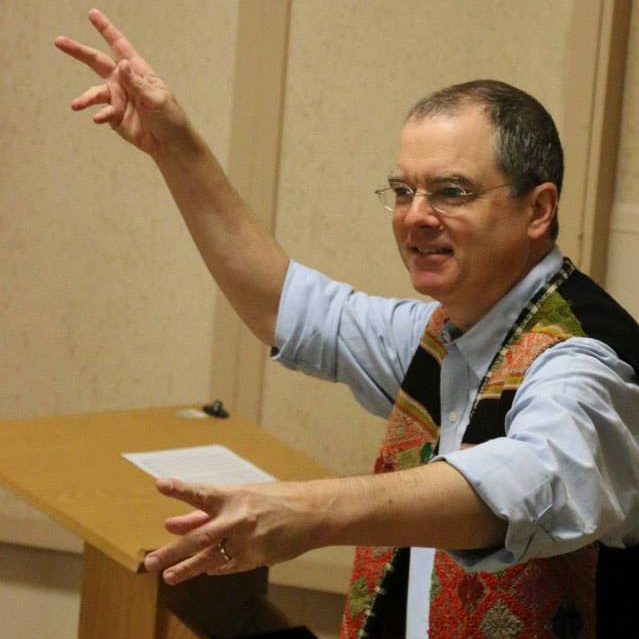A Musical Trinity: Three Types of Love Songs in One
by Adam Gilbert

Invoking the time honored trinity of Virgilian styles, the 15th-century theorist and composer, Johannes Tinctoris, listed three different types of songs: Cantus magnus (“grand song”) referred to the Mass. Cantus mediocris (medium song) referred to the Motet. The third genre, cantus parvus (“little song”), referred to love songs.
If there had been radios in the Renaissance, there would have been a top-forty of love songs, nothing but love songs. Fortunately, many of these chansons-composed by the likes of Guillaume Dufay, Gilles Binchois, Antoine Busnois, Johannes Pullois, Loyset Compère, Firminus Caron, Henricus Isaac, and Josquin Desprez-survive in manuscripts lovingly copied by anonymous scribes, and saved from ruin by avid collectors over the centuries.
Composers did more than just set love poems to music. Like modern jazz musicians, they improvised and composed florid counterpoint over favorite melodies and added new voices to old songs. Like modern hip-hop artists, they sampled small fragments of songs to use as ostinato patterns for new versions. They made satirical commentary on elegant love songs by juxtaposing them with racy, rustic tunes and downright obscene texts. Like Noël Coward and Cole Porter, composers borrowed, parodied and alluded to songs by their colleagues, teachers and friends. And they chose the love songs to be the cantus firmi of their grandest sacred motets and masses.

There was a rich theological and Platonic tradition for this practice. Based on the idea that humans can only reach for the inconceivable and pure, universal divine through the realm of sensible perception, composers chose songs that pulled at human heartstrings, leading upward toward heavenly salvation. This is why Isaac and Josquin would use Binchois’ Comme femme desconfortée as the basis for a Marian Mass or the motet Stabat mater dolorosa. What better song to bring the sorrows of Mary to life than one about “the saddest woman in the world” whose love has been stolen by Death? Or consider Heyne van Ghizeghem’s De tous beins plaine est ma maistresse (“My Lady is full of all good things”), one of the most popular chansons of the century. Loyset Compère would take the melody and translate its text to Latin in the motet Omnium bonorum plena, implying that the Virgin Mary “is full (pregnant) of all good things.” And then there is the song Et trop penser, whose text describes the dream of seeing a lover naked in the middle of the night. Such an erotic text is a perfect match for the imagery of the Annunciation to the Virgin, when the Lord is revealed in all His glory. Songs could even have a practical use for those looking to exist on a higher plane. The song Maria zart was reported to cure syphilis if sung a certain number of times: the same number of times the melody appears in Jacob Obrecht’s Missa Maria zart.
Finally, the songs of the fifteenth century are, as Howard Mayer Brown wrote, “exquisite miniatures,” finely crafted, with kaleidoscopic turns of phrase, jazzy syncopations, deceptive elisions, and brilliant explorations of just how many permutations a single melodic pattern can yield. These are some of the most beautiful songs ever to be copied on a page, with melodies like autumn leaves that rise and never fall all the way to the ground, drifting across the pages and hearts of the fifteenth century, and somehow, despite the ephemeral nature of music, still capable of bringing a tear today.
On Saturday, January 31, 2015, Adam Gilbert. Director of the Early Music Program at the University of Southern California, will be presenting a workshop for the Mid-Peninsula Recorder Orchestra entitled, Villain et Courtoise: Rustic and Bawdy Songs Dressed in Courtly Finery. The workshop will explore how simple popular songs of the late Middle Ages and Renaissance, often with bawdy lyrics, were transformed by the great composers of the day into elegant courtly love songs, sacred motets, and even Masses using the intricate polyphony of the late 15th and early 16th centuries. You can download a registration flyer here. Fill it out and mail to Leslie Pont, 1184 Laureles Dr., Los Altos, CA 94022. For further information, please visit the MPRO website at <http://mpro-online.org/> or contact Leslie Pont at 650-941-3065.












